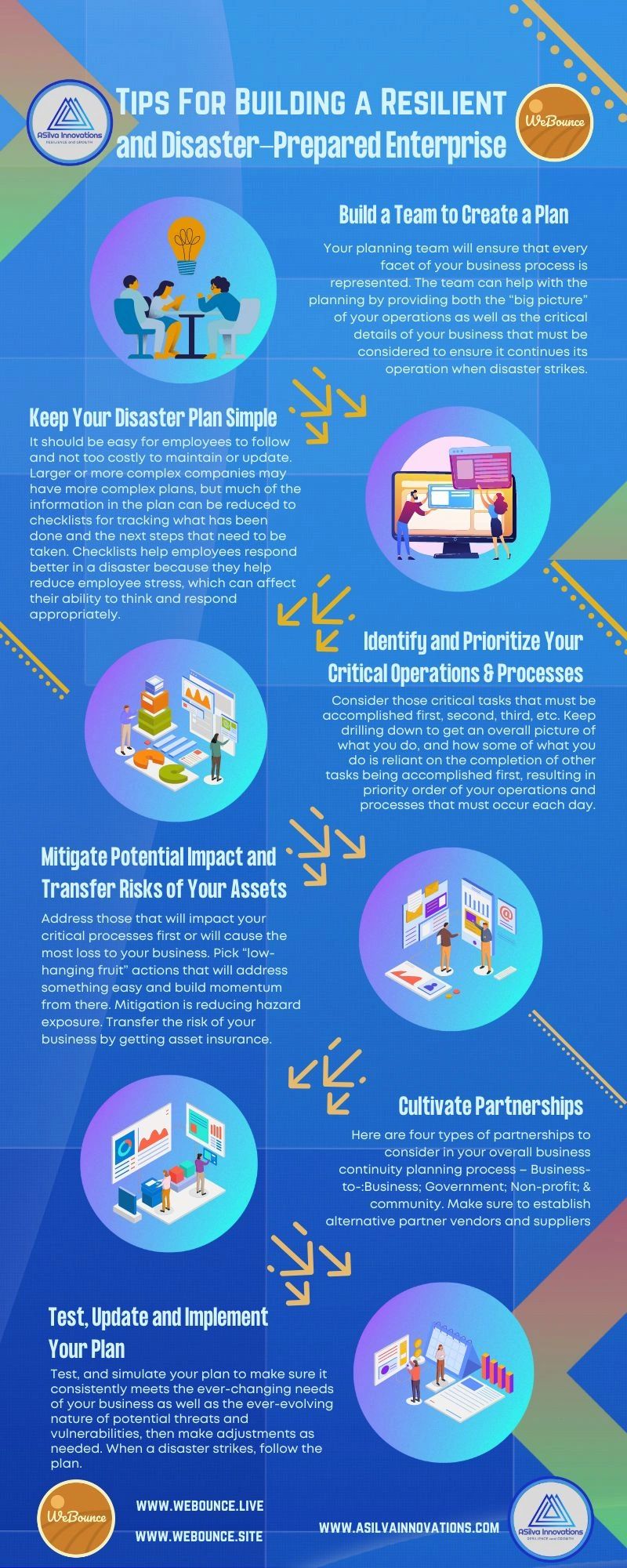Tips for Building a Resilient and Disaster-Prepared Enterprise
by Alvin Silva
Disasters and unexpected events can strike any business at any time. Whether it's a natural disaster, a cyber attack, or a major system failure, being prepared is crucial for ensuring the continuity and resilience of your enterprise. In this post, we have explored six essential tips for building a resilient and disaster-prepared enterprise.
1. Build a Team to Create a Plan
The first step in preparing your enterprise for disasters is establishing a dedicated team responsible for creating and implementing a disaster preparedness plan. This team should include individuals from various departments, such as IT, operations, finance, and human resources, who can bring their unique perspectives and expertise. By involving key stakeholders, you can ensure that the plan addresses all critical areas of your business.
2. Keep Your Disaster Plan Simple
While it's important to be thorough, keeping your disaster plan simple and easy to understand is equally important. During a crisis, every second counts, and complex procedures may lead to confusion and delays. Clearly outline the roles and responsibilities of each team member, provide step-by-step instructions, and ensure that the plan is accessible to everyone in the organization. Regularly review and update the plan to reflect your enterprise's operations or infrastructure changes.
3. Identify and Prioritize Your Critical Operations & Processes
Not all business operations and processes are created equal. Identify and prioritize the critical ones for your enterprise's survival and functioning. This could include customer support, data backup and recovery, supply chain management, or any other essential functions for maintaining operations during a crisis. By focusing your resources on protecting and restoring these critical areas, you can minimize the impact of a disaster on your business.
4. Mitigate Potential Impact and Transfer Risks of Your Assets
Disasters can have severe consequences for your physical and digital assets. Take proactive measures to mitigate their potential impact. This could involve securing your facilities, implementing robust cybersecurity measures, regularly backing up your data, and having redundancy plans for essential systems. Investing in protective measures upfront can minimize downtime and reduce the risk of data loss or damage to your infrastructure.
Transferring identified risks of your assets is an important consideration as well. Explore insurance options and consult with experts to determine the best ways to transfer the risks associated with your assets. This can provide additional protection and financial support in the event of a disaster.
5. Cultivate Partnerships
No enterprise is an island, especially when it comes to disaster preparedness. Cultivate partnerships with relevant organizations, such as local emergency services, suppliers, and neighboring businesses. These partnerships can provide valuable resources, support, and information during a crisis. Collaborate on disaster response plans, share best practices, and participate in drills or simulations. By working together, you can enhance the resilience of the entire community.
6. Test, Update, and Implement Your Plan
A disaster preparedness plan is only effective if regularly tested, updated, and implemented. Conduct regular drills and simulations to evaluate the effectiveness of your plan and identify any areas that need improvement. Encourage feedback from your team members and incorporate their suggestions to enhance the plan's efficiency. Additionally, stay informed about the latest trends, technologies, and best practices in disaster preparedness. Continuously update your plan to align with the evolving threat landscape and the changing needs of your enterprise.
In conclusion, building a resilient and disaster-prepared enterprise requires careful planning, collaboration, and a commitment to ongoing improvement. By following these six tips - building a team, keeping your plan simple, identifying critical operations, mitigating potential impact, cultivating partnerships, and regularly testing and updating your plan - you can enhance the readiness of your enterprise and minimize the disruption caused by unforeseen events. Remember, disaster preparedness is an ongoing process, and staying vigilant is key to ensuring the long-term resilience of your business.
